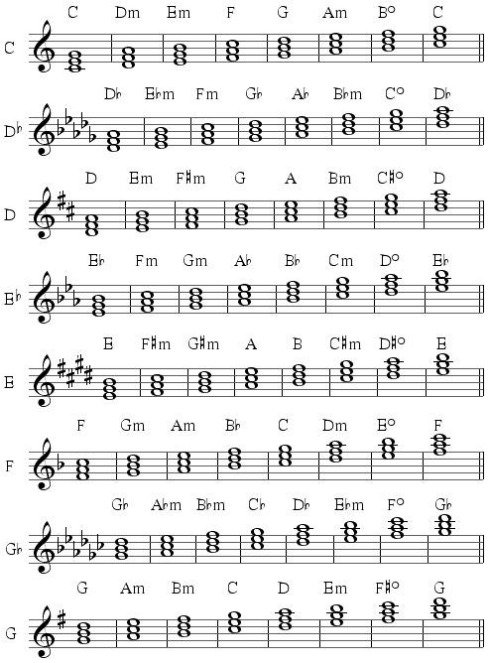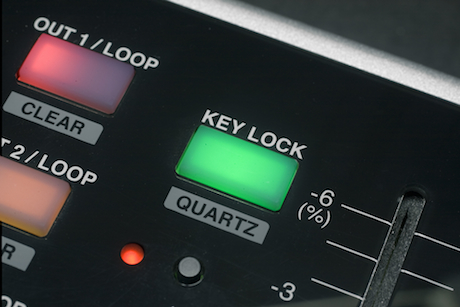

The Guitar and Bass Guitar (both of which sound an octave lower than written) are 2 really common examples of this, as are the Glockenspiel and Recorder (both sound 2 octaves higher than written).“ In the key of… ” - we rarely get far into our musical endeavors before we find ourselves faced with this phrase. However, the “C” that sounds is at a different octave to the “C” which is written. Some instruments appear not to be transposing instruments because a written “C” sounds a “C’. You may come across some other ones, but you will be well on your way if you learn this list.

Low Instruments in B Flat (these sound a major ninth lower than written) Instruments in Eb (these sound a mar sixth lower than written) Instruments in F (these sound a perfect fifth lower than written) Instruments in B Flat (these sound a major second lower than written) There are lots of transposing instruments in existence, but here is a list of the most common ones you will come across:
#Whick music keys are lower how to#
Learn the instruments – There is no escaping the fact that the best way to learn how to spot transposing instruments in a score is to memorise which instruments are transposing instruments. Instrument Name – Sometimes the instrument name at the start of the stave will give the key it is in (e.g.  Different Key Signature – If one (or more) of the instruments has a different key signature to a concert pitch instrument then it is a transposing instrument. There are 3 main ways of spotting a transposing instrument when you are reading sheet music: How to spot a transposing instrument when reading music If it sounds in B flat then the instrument is described as a B Flat instrument. When you play the most simple of scales on a woodwind instrument (covering all the sound holes and then uncovering them in sequence up the instrument) it is described as the C scale – however, it will not necessarily sound in “C”. Some wind instruments sound “better” when built in certain keys – they have a more pleasing tone. All subsequent notes played on the Alto Saxophone sound a major sixth lower than written. A “C” played on an Alto Saxophone in Eb will actually sound an “E flat” a major sixth below. Any note you play sounds a major second lower than written – an “A” played on the Trumpet would sound “G”. If you play a “C” on a Trumpet it will actually sound a “B Flat” – hence, why it is called a B Flat Trumpet. Let’s take a Trumpet in B Flat as another example. So, if you read a “C” and play a “C” on a B Flat Clarinet the note that sounds is a B flat and not a “C” – confused? I was baffled by this for a long time before I realised that, although it sounds complicated, it’s actually quite easy to grasp if you look at a few examples. What is a transposing instrument?Īn instrument where the note written differs from the note sounding is called a transposing instrument.
Different Key Signature – If one (or more) of the instruments has a different key signature to a concert pitch instrument then it is a transposing instrument. There are 3 main ways of spotting a transposing instrument when you are reading sheet music: How to spot a transposing instrument when reading music If it sounds in B flat then the instrument is described as a B Flat instrument. When you play the most simple of scales on a woodwind instrument (covering all the sound holes and then uncovering them in sequence up the instrument) it is described as the C scale – however, it will not necessarily sound in “C”. Some wind instruments sound “better” when built in certain keys – they have a more pleasing tone. All subsequent notes played on the Alto Saxophone sound a major sixth lower than written. A “C” played on an Alto Saxophone in Eb will actually sound an “E flat” a major sixth below. Any note you play sounds a major second lower than written – an “A” played on the Trumpet would sound “G”. If you play a “C” on a Trumpet it will actually sound a “B Flat” – hence, why it is called a B Flat Trumpet. Let’s take a Trumpet in B Flat as another example. So, if you read a “C” and play a “C” on a B Flat Clarinet the note that sounds is a B flat and not a “C” – confused? I was baffled by this for a long time before I realised that, although it sounds complicated, it’s actually quite easy to grasp if you look at a few examples. What is a transposing instrument?Īn instrument where the note written differs from the note sounding is called a transposing instrument. 
These are called transposing instruments. However, there are some instruments you will come across when learning how to read music where the note that sounds is different from the note which is written. When you are playing an instrument like a piano or a flute, if you read a “C” and play a “C” then the note will sound as a “C” – seems logical really! These instruments are said to be at concert pitch.








 0 kommentar(er)
0 kommentar(er)
